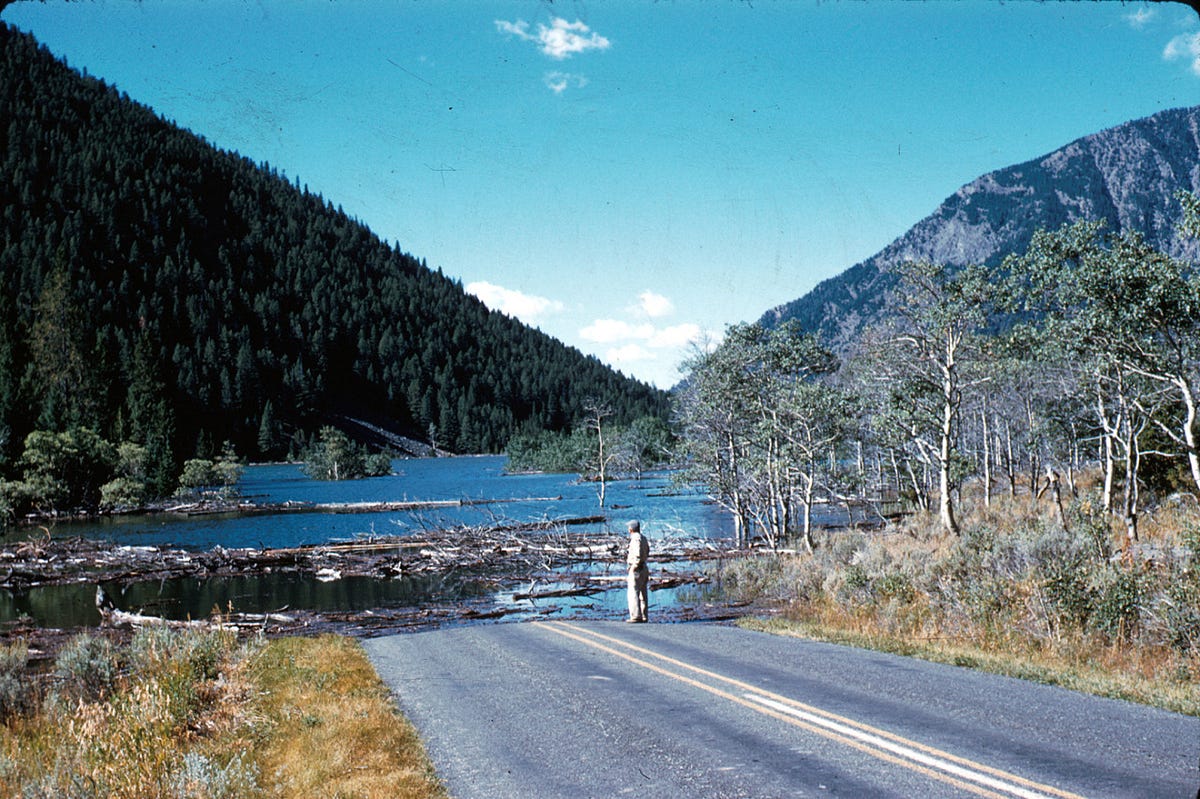Earthquake lakes are fascinating geological formations that emerge following seismic activity. These lakes can pose significant risks to nearby communities and ecosystems, yet they also provide valuable insights into geological processes. In this article, we will explore what earthquake lakes are, how they form, the dangers they present, and the management strategies employed to mitigate risks associated with them.
Understanding earthquake lakes is crucial for both environmental scientists and the general public, especially in seismically active regions. This article aims to provide comprehensive information on the topic, ensuring that readers grasp the implications of these natural phenomena. We will delve into various aspects, including the geological processes involved, case studies of notable earthquake lakes, and recommendations for safety and preparedness.
As we navigate through this article, you will discover the intricate relationship between tectonic activity and the formation of these lakes. Equipped with this knowledge, you will be better prepared to understand the risks and engage in discussions about earthquake preparedness in your community.
Table of Contents
- What Are Earthquake Lakes?
- Formation of Earthquake Lakes
- Risks Associated with Earthquake Lakes
- Notable Earthquake Lakes Around the World
- Management and Mitigation Strategies
- Case Studies of Earthquake Lakes
- Safety and Preparedness for Earthquake Lakes
- Conclusion
What Are Earthquake Lakes?
Earthquake lakes are bodies of water that form as a result of landslides triggered by seismic events. When an earthquake occurs, the ground shakes, causing soil and rock to collapse into valleys or riverbeds, thus obstructing waterways and creating natural dams. These dams can lead to the accumulation of water behind them, forming a lake.
Characteristics of Earthquake Lakes
- Temporary or Permanent: Some earthquake lakes are temporary and may drain over time, while others can persist for years or even centuries.
- Variable Size: The size of these lakes can vary dramatically, depending on the volume of water and the extent of the landslide.
- Geological Impact: Earthquake lakes can alter local ecosystems and hydrology.
Formation of Earthquake Lakes
The formation of earthquake lakes involves several geological processes. The primary cause is the sudden movement of tectonic plates, which can result in ground shaking and subsequent landslides.
Key Factors in Formation
- Tectonic Activity: Earthquakes are caused by the movement of tectonic plates. In regions with significant tectonic activity, the likelihood of earthquake lakes forming is higher.
- Topography: The physical landscape plays a crucial role; steep slopes are more prone to landslides during seismic events.
- Water Source: The presence of rivers or streams is essential for the formation of lakes, as the obstruction of these water sources leads to accumulation.
Risks Associated with Earthquake Lakes
While earthquake lakes may seem benign, they pose several risks to surrounding communities and ecosystems. Understanding these risks is vital for effective management and preparedness.
Potential Hazards
- Flooding: If the natural dam formed by a landslide fails, it can lead to catastrophic flooding downstream.
- Debris Flow: Landslides that form the dam can also lead to additional debris flows, which can be hazardous to life and property.
- Earthquake Aftershocks: Continued seismic activity may destabilize the dam, increasing the risk of failure.
Notable Earthquake Lakes Around the World
Several significant earthquake lakes have been documented globally, each with unique characteristics and histories.
Examples of Earthquake Lakes
- Lake Kakhovka, Ukraine: Formed after a landslide triggered by an earthquake in the Carpathian Mountains.
- Lake Tanganyika, East Africa: Although primarily a rift lake, seismic activity has influenced its current shape and size.
- Lake Kinneret, Israel: This lake has experienced changes due to tectonic activity in the region.
Management and Mitigation Strategies
Effective management and mitigation strategies are essential for minimizing the risks associated with earthquake lakes.
Strategies for Mitigation
- Monitoring: Regular monitoring of seismic activity and water levels in earthquake lakes is crucial for early warning.
- Infrastructure: Building infrastructure such as spillways can help manage water levels and reduce flood risks.
- Community Preparedness: Educating local communities about the risks and safety measures can enhance resilience.
Case Studies of Earthquake Lakes
Analyzing specific case studies provides valuable insights into the management of earthquake lakes.
Notable Case Studies
- 1970 Ancash Earthquake, Peru: This event created several lakes due to landslides, highlighting the need for effective disaster response strategies.
- 2011 Tōhoku Earthquake, Japan: The formation of new lakes raised concerns about flooding and debris flows, prompting emergency management efforts.
Safety and Preparedness for Earthquake Lakes
Preparedness is key to mitigating the risks associated with earthquake lakes. Individuals and communities can take proactive steps to ensure safety.
Key Preparedness Measures
- Emergency Plans: Develop and practice emergency plans that account for potential flooding.
- Education: Inform community members about the signs of potential dam failure.
- Evacuation Routes: Clearly mark and communicate evacuation routes in case of emergency.
Conclusion
Earthquake lakes represent a significant intersection of geological activity and environmental management. Understanding their formation, risks, and management strategies is crucial for communities in seismically active regions. By staying informed and prepared, we can mitigate the dangers associated with these natural phenomena.
We encourage you to leave a comment below, share this article with others, or explore more resources on earthquake preparedness and environmental science on our website.
Thank you for reading, and we hope to see you back on our site for more informative articles!
Paisanos Richmond: A Dive Into The Culinary Haven
Rolling Stoves: The Ultimate Guide To Efficient Cooking
Exploring The Richardson Farmers Market: A Hub Of Freshness And Community

/cdn.vox-cdn.com/uploads/chorus_image/image/64421816/909001.0.jpg)
